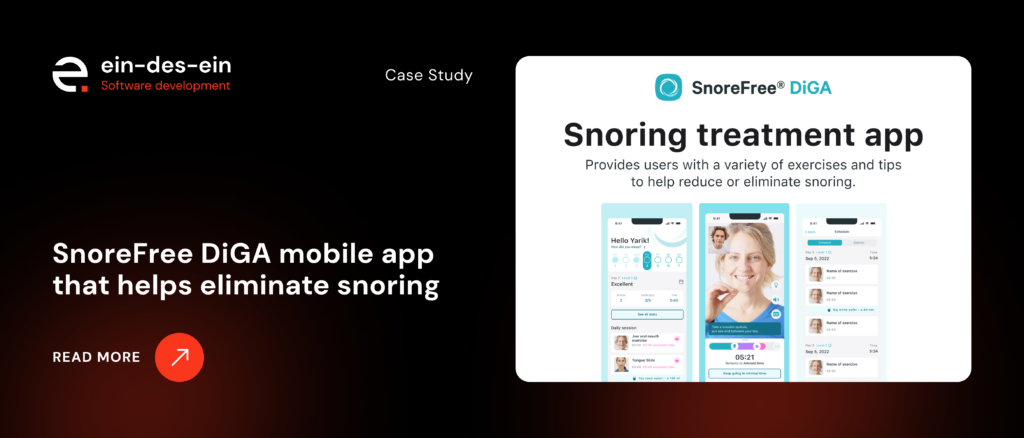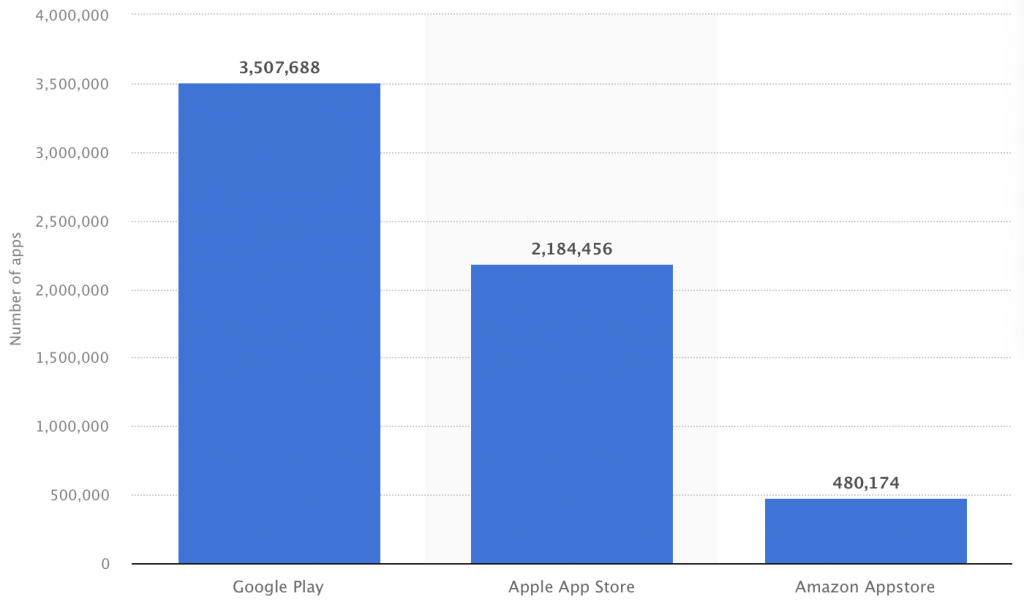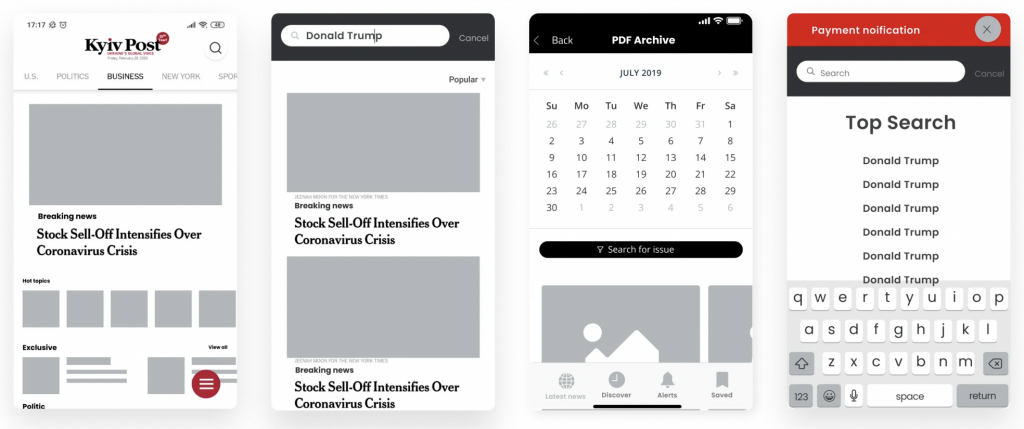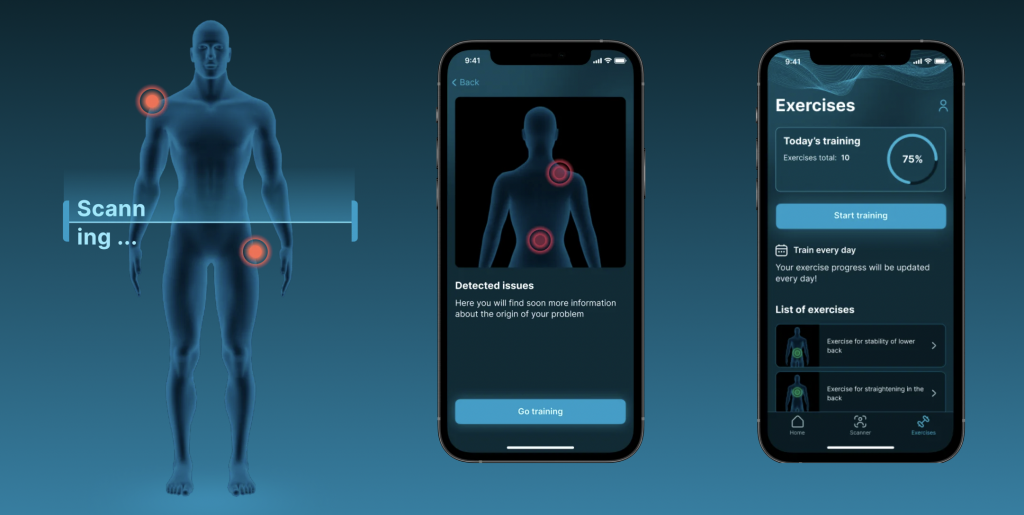A Complete Guide on How to Make A Successful Mobile App

The mobile app market is enormous, so every newcomer enters a highly competitive environment. People spend an impressive amount of time on various mobile apps, from social networks and streaming platforms to games. The average smartphone owner has approx. 20-30 applications installed on the device, but the number of frequently used ones is around 3-5. The end goal of every market player is to be among these favorites and must-haves.
With so many nuances, it can be difficult to know where to start. You may have a fantastic idea, however, there is no guarantee the project will be prosperous eventually: a poor implementation may nullify your efforts. But with the right planning and execution, your app can be a huge hit! Opportunities are endless, and the statistics says for itself: by the end of 2022, consumer app spending is expected to reach $170 billion.
In this article, we will outline tips on how to create a successful mobile application that people will love!

A step-by-step instruction on how to Create a Successful App
When building an application or improving an existing one, you must develop front-end and back-end parts, which both consist of many stages.
First, decide which platform (iOS or Android) meets your expectations and formulate requirements. The list of tasks includes UI/UX design, prototyping, programming, testing, and maintenance.
During the planning phase, the team explores the concept from all sides: what problems it should solve, its value and unique selling point, and other aspects. Marketing activities and further promotion are also planned here. After the release, further technical support should be provided.
Let’s take a closer look at each phase below.
Do Market Research & Identify your Audience
It is necessary to conduct a full-fledged study to build the right concept. It helps to identify the “pain points” of a potential audience and get acquainted with competitors.
Try to study all the existing information on the Internet before contacting a team of professional analysts and researchers. First, check out the top apps in the desired niche and see what “stars” are there. Find an emerging market still growing in the desired segment and focus on it.
Imagine you are planning to launch a racing game. This is still an emerging niche with plenty of opportunities. However, you have to invest significant effort into drawing graphics and picking a unique concept as you have to compete with giants such as EA and Gameloft.
Check out analogs repeating your functionality, as you might spend dozens of hours building something already existing.
Identify your target audience (TA) i.e. information about potential consumers: gender, age, location, education, occupation, lifestyle of your TA etc. Various services help firms accumulate necessary information about TA, such as Google Trends, Adwords, and Flurry. Each of them extracts data from a variety of programs. To filter information that may be useful for you, keep your focus on the potential audience. Take your time here. Success comes from understanding the nuances.

Finalize Unique Selling Points
Applications may have similar core functionality, but Unique Selling Point (or USP) is what helps your product stand out. Moreover, consumers usually do not have much time to discover a specific product’s “extraordinary uniqueness”, so it should quickly and conveniently solve a particular problem.
Find all similar concepts to yours present on the market and compare their functionality based on such criteria:
- Advantages and disadvantages;
- Price;
- Key features;
- Value;
- Reviews and achievements;
- Small details (examine every little detail where your concept differs from competitors and determine if this is an advantage or a disadvantage).
Create a Thought-out Business Plan
A well-written business plan will include a number of basic elements, all of which work together to give your business the best chance of success. The project description should include a concise overview of your business concept, as well as key market research that supports the viability of your idea. Additionally, a SWOT analysis (strengths, weaknesses, opportunities, and threats) can be helpful in identifying potential challenges and opportunities for your project. Another critical element is a detailed technical task (TT) where features, components, use cases are described. This should outline all the necessary steps required to bring your concept to life. Profit and loss calculations demonstrate the potential financial viability of your business.
The total cost is outlined at the beginning and specified in the business plan. There are numerous factors affecting it, including the overall project complexity, the number of specialists involved, custom illustrations or elements etc. In addition, the promotion phase of the project requires a separate budget for marketing and advertising. When selecting a monetization model, there are a few possible options, such as subscription, freemium, pay-per-use etc.
A platform is selected from the start too: Android development significantly differs from iOS app development because each platform has its own characteristics, different frameworks and languages are used, and separate specialists are involved. Do not underestimate one of the “candidates” only if the platform is not popular in your region: during Q2 of 2022, Android users could choose among 3.5 million available apps, while the App Store offered more than 2.2 million apps:

Gather your design and development team
It is crucial to find the right company with relevant mobile design and development expertise for your needs. You can’t just settle with any service provider; you require qualified professionals who understand how specific industries work and have experience creating mobile applications tailored specifically toward those fields. To get started on finding these experts, look through their portfolio (and do some research) then speak directly with people from other firm on where they’ve received mobile development services from; check out reviews about possible candidates online on platforms like Clutch.
Regarding nuances, be attentive: do not let sales managers rush you. Check the market beforehand to know approximate fees for provided services. If they seem mysteriously low, there is a reason behind it. Ask about deadlines – proper work cannot be done within a few weeks, especially when discussing a complex project.
Design a Simple and Intuitive UX/UI
The UX/UI design is essential for several reasons. If the app is difficult to navigate, users are likely to give up on it and move on to something else, they do not subscribe to premium features. For instance, if it’s designed to help people lose weight, but its UX/UI makes it difficult to track progress or find relevant information, it is unlikely to be successful. Apps are aimed at quickly solving and optimizing daily tasks, not forcing anyone to guess which button to press to get the result. Finally, bad UX/UI impacts company’s reputation.
UI/UX designers must understand project’s requirements, target audience’s preferences and industry specifics. Only with this information they are able to create suitable and relevant wireframes. They are placed in logical order and simulate user’s path through the application.

Only when wireframes are approved, they become a basis for future UI design that will meet both branding and functionality requirements. All brand elements including colors and fonts are chosen at this stage:

Define Tasks for a Development Team
Programming phase begins once all screens are designed. Here, the functionality is created. Take future needs into account too. For example, to “prepare” the system architecture for further scaling or high load.
The front-end is the part that users see and interact with. While the back-end is responsible for powering the app, the front-end is responsible for making it look and feel smooth and “alive”. Front-end developers also need to consider different screen sizes and resolutions, as well as how to make the most efficient use of space. In addition, they need to ensure that the app works offline if needed and can store data locally. Essential elements like swipes, scrolls, and animations are also created by front-end developers.

Aesthetics and user-friendliness are crucial for drawing attention. However, the back-end is just as critical as the front-end. The speed at which an app loads and responds to requests is one of the main determining factors in whether people like the product. If it is slow or unresponsive, they quickly become frustrated and turn to competitors. Therefore, developers ought to optimize their code and think about caching to keep things running smoothly. Additionally, they should set time for regular refactoring to avoid any potential issues. Of course, different apps have different requirements. For example, if you’re targeting a global market, you’ll need to take timezone differences into account when sending push notifications.
Plan a marketing strategy
Once again, analyze the TA to plan further advertising campaigns, every penny of your marketing budget should help drive more traffic.
One more success factor is finding the right launch time. Perhaps your product is seasonal or explicitly designed for the Christmas holidays (Labor Day, Black Friday, etc.). Then, starting a bit in advance is more reasonable. Deadlines are usually discussed in advance. To speed up the process, you can release an MVP – a version with limited functionality to improve in the future.

Budget planning
If you wonder how to create an app without additional expenses, remember that budget spending won’t end when the product is released. It has to be actively promoted and advertised regularly. You might implement some integrations for free, but bringing a new product to the market is almost impossible without any investments. You need to plan a separate marketing budget constantly. There is a chance of losing money in case you select wrong promo channels, so it is more reasonable to find proficient outsourced marketing managers, ppc-specialists, SEO specialists, as well as ad materials designers and copywriters.
Tools for promotion
Contextual ads. When a person writes a request, Google processes it and shows relevant pages, the first three of which are advertised. It works best when the product is already known and the person is specifically looking for it. But you may set up an advertising campaign, so users could see ads for your application too; the main thing is to set the search result keywords correctly.
YouTube. Set up targeting by interests: advertising will be shown only on similar-themed and related channels – where you can find your TA. Or maybe you are ready to start a new channel and promote the app there! If so, make a promotional trailer and think about engaging content for your subscribers.
Advertising in the App Store and Google Play. The purpose here is to get to the TOP. Then it is more manageable to promote the product as it appears more frequently in the search results and recommendations. A newbie reaches the top list if it is downloaded 6,5+ thousand times on the 1st day. By the way, choose the right category: if store visitors are browsing categories to find an app, one mistake can affect their decision to keep on doing that!
Social networks. With the help of targeting tools and advanced settings, you can cover various target groups and advertise the application to them, not spending funds on non-relevant users. Try cooperating with influencers!
Thematic sites, forums and communities. Each target group has websites they visit, so consider placing an advertising banner or teaser on such websites (contact the site owner).
Fix Bugs & Make Regular Updates
The main task here is to check if everything works stably, reliably and securely. As anyone who has ever released software comprehends, it is impossible to anticipate and prevent every possible error. There are simply too many variables, including the number of devices, operating systems, screen sizes, and installed software configurations. Even the performance levels of particular devices can vary widely. That’s why Quality Assurance department’s main duty is to identify potential errors and help fix them. Testing is an essential, and without it, any app is likely to be buggy and unstable. Furthermore, not all bugs are noticed at the pre-release testing stage for many reasons, but it is not a problem: post-release debugging is a usual practice. Post-release technical support is also required to fix occurring errors.
Get Customer Feedback
Provide multiple feedback channels: they should be convenient, accessible and fast. A live chat with customer support team involvement is a perfect variant, however, it requires the biggest investments, not all startups can afford it. If you are just getting started, you might need it while user base is still growing. For more prominent companies, this option often becomes a necessity though. Offering a chat option is generally more efficient than relying on email, as it allows for a back-and-forth conversation in real-time. This can be especially helpful when dealing with technical issues or questions that require more than a simple yes or no answer. For such type of general questions, a chatbot is an option too.
Email communication can be frustrating for users who need immediate answers, but would be a solution if you’re constantly dealing with non-urgent matters or issues that require more detailed explanation. In these cases, users agree to wait a bit longer for a response, and having their contact information on hand can be helpful in follow-up conversations. Ultimately, the best way to improve the UX is to offer multiple channels for customer support simultaneously and let users choose the option that best suits their needs.
Make your product better to retain users
Finally launching a product is only half the battle. It’s time for behavioral analytics and tracking of your customers actions within the app. Tracking your total downloads is a good start but the number of unique users per day and month will tell you much more (how useful the app actually is).
Stickiness is a measure which shows how likely people are to come back to your app. Stickier apps are usually more profitable and have a higher ROI. The term “ROI” stands for “return on investment.” It is a way of measuring the profitability of a particular action or campaign. In general, ROI is calculated by dividing the total revenue generated by the action or campaign by the total cost of the investment.
Anyone who has ever tried to interpret a set of these numbers knows that it is not always an easy task. Even when the data seems straightforward, there is always the potential for error. This is why businesses place such a high value on analysts who are able to correctly interpret the numbers. A good analyst can make all the difference when it comes to making sound decisions, so make sure such professional works on your app too: they are able to look at the data and see beyond the surface, identifying trends and patterns that others might miss.
Conclusion
Anyone who has ever browsed the App Store knows that there are millions of mobile apps to choose from. With such a vast selection, it can be hard to stand out from the crowd. However, for those who are willing to put in the upfront work, the rewards can be great. A strong innovative idea should be reasoned and meet someone’s needs. With a solid concept, entrepreneurs begin putting all sources together to bring their vision to life. Please remember that before launching any new business, it’s essential to conduct thorough market research. Once you have all this information, you can begin to calculate what budget is required.
Achieve a proper level of UI/UX to make the product understandable, nice-looking and user-friendly. Furthermore, QA team should thoroughly test your app before it’s released.
Any app development process worth its salt includes some kind of marketing or advertising budget. After all, what’s the point in taking the time and effort to create something if no one knows about it? However, simply throwing money at marketing is not enough – you ought to carefully choose which channels will be the most effective for your product type. For example, if you’re releasing a game, a cooperation with influencers who specialize in gaming can be a great way to reach your TA. Similarly, if you’re releasing a meetings planner, ads on platforms like LinkedIn may be more effective than ads on Facebook. Track key metrics like download rates and CPA. This feedback will be essential for making further improvements.
Once the product is launched, you’ll need to provide continuous support and updates to keep a high level of engagement. Technical support is essential, as problems will inevitably arise (no-one is perfect!), and it’s vital to have a quick and easy way for people to contact the support team. This can be accomplished in a number of ways, such as providing a feedback form or an online chat service. Whatever method is used, it’s important that it is fast and seamless, so customers can get the help they need as quickly as possible.
How to create an app for my business is the most common question we get from potential clients. Plus, we see lots of questions in Google search like how to make an app for beginners. The answer is it’s not an easy task for sure if we speak about a quality product. The creation process usually involves a number of distinct stages, from initial idea analysis to final testing. A team of analysts, designers, testers, and software developers is typically responsible for these tasks, so it is critical to choose a reliable and experienced studio having a proven track record in delivering quality software on time and within budget. In addition, the best studios have a team of professionals who are passionate about their work and who are always looking for ways to improve the product. By choosing a reputable studio, you can be sure that your project will be in good hands.
Frequently Asked Questions
What elements actually make an app successful?
How hard is it to make an app that attracts the right audience? The answer is pretty simple: a genuinely successful mobile app must necessarily meet users’ needs. Give them only valuable features, high download speed, ease of use, and fast technical support in case any problems happen.
What is the cost of successful app development in the US?
The final price differs due to many factors, mostly depending on the complexity. The average cost may be 40000-60000 USD for a simple app, 60000-150000 USD for an average project and 300000+ USD for complex applications. That is why hiring developers from Eastern Europe is usually cheaper, as specialists’ qualifications are often equal.
Add professionals to your team

What programming languages are used for app development?
Since the beginning, Java was the main language for developing mobile applications on Android. Kotlin is the latest programming language that is fully compatible with Java. Swift is a programming language developed by Apple as a modern replacement for the Objective-C previously used to build iOS apps. Swift was originally designed for iOS development, but can now be used to develop applications for macOS, Windows, and Linux.